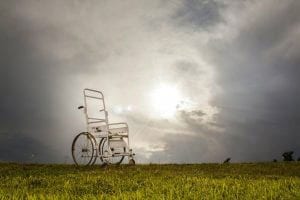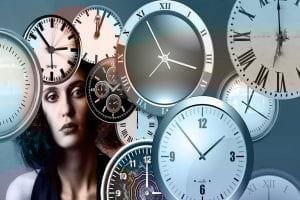Continued From Part One
He cannot participate in the sports and physically demanding hobbies he once enjoyed. “Due to pool & gym closures during the Covid pandemic, walking was my primary means of exercise, and over the last 2 years, I have developed a significant foot drop,” he says. While the foot drop is typically the first warning sign of GNEM, it wasn’t the case for Mangesh, who experienced other symptoms such as hand grip weakness, difficulty climbing stairs, and lifting heavy items first. “The foot drop symptom wasn’t present until now, and this definitely affects me in everyday life,” Ghiware says. “It’s caused a lot of falls. I have to be a lot more careful.”
Compared to just one year ago, the proud father of a soon-to-be eleven year-old daughter, Samira says that he now does significantly less walking as a result. He counts himself lucky that he’s still able to drive Samira to her activities. But he mentions that if an errand or activity requires significant walking, he may not be able to join her. Nowadays, Ghiware relies on a helpful foot brace that attaches his shoe to his ankle.
When asked if he relies on additional physical aids or helpful resources, the Neuromuscular Disease Foundation (NDF) comes up first. Ghiware attends NDF’s Symposiums annually, where the non-profit organization hosts renowned researchers and experts in GNEM. Recently, Ghiware joined a virtual webinar the NDF hosted, entitled “Seeing Clearly: The State of NDF,” wherein the group’s Executive Director Geoffrey Gee, Esq., presented an overview of the financial operations of the organization, and the rapid progress that NDF has achieved in the past year, with its “International Gene Therapy Development Program (IGTDP).” The program was designed to deliver a pre-IND (Investigational New Drug) package to the FDA paving the way for clinical trials that will end GNEM’s progression. “I loved hearing about NDF’s future plans,” Ghiware says, “I’m happy to see how much progress they’ve made. To be able to look into the future to see how this will play out, is very hopeful. Patients who are at my stage of the disease are wondering: ‘Is this going to happen in my lifetime? In a way that will make a difference to our way of living?.’ I’m hopeful about what NDF is doing; it’s a game changer. The treatment they’re developing feels a lot nearer to me than other trials, timewise. I want to help the NDF however I can. Raising awareness is perhaps the most important thing at present.”
Ghiware also shares that he enjoyed the 2019 symposium in Philadelphia which he attended with his dad and where they both donated muscle tissue through an onsite biopsy. “I have access to the MDA multi-disciplinary clinic at Stanford Neuroscience Center, but for patients in SoCal, the clinic offered by NDF is a great opportunity. Early on in the pandemic, the virtual patient huddles were a fantastic way to keep in touch with fellow patients, and learn from each other. Lastly, the annual gala is something I plan to attend this year.”
The NDF provides multiple patient programs, including the multidisciplinary clinic. It also hosts worldwide science symposiums, and is the world’s single largest funder of critical research in service of GNEM. In late 2021, the NDF announced the launch of the International Gene Therapy Development Program, and has made rapid progress toward its goal of delivering a pre-IND package to the FDA, to reach the human dosing phase of the first effective treatment that will end GNEM.
If you would like to contribute to the critical research that will stop GNEM in our lifetimes, please visit NDF’s Get Involved page to learn more about the monthly giving program, the corporate partnership, or simply to make a donation.







